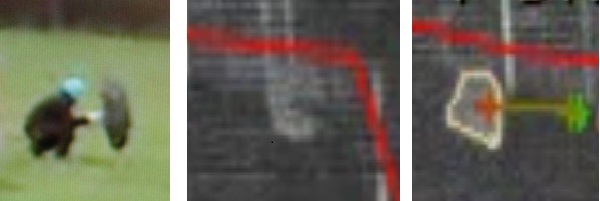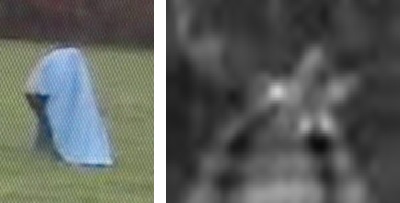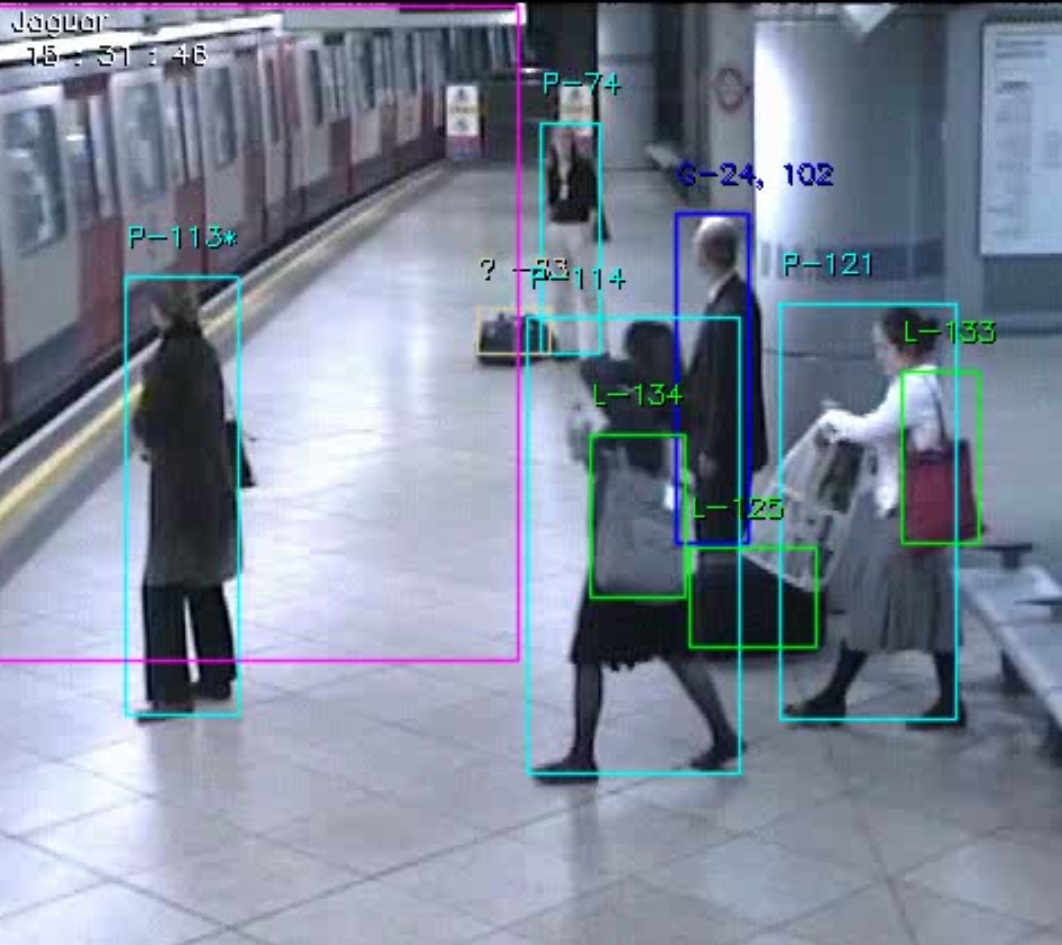With a new man-machine interface, which integrates our two software products in a common web nutshell, new AI functionalities are offered, without of course neglecting the now classic intelligent image analysis functions of Evitech's software offering.
Jaguar is our software dedicated to the detection of individual target behavior scenarios, over fixed cameras images, or on alternating fixed viewpoints (PTZ domes), exploiting alarm rules associated with a scene and a surveillance context: zones, perspective, action sequences, moving target typology, speed, size, color... Guaranteed detection of 100% of visible threats in the image, even the smallest ones (per pixel), and a minimal false alarm rate are the two key features of this iLIDS-certified software.
Lynx is our software dedicated to managing medium to very dense crowds, combining different, parallel functions for counting people, detecting armed people, measuring waiting times, and monitoring crowd behavior (contraflow, fast running, blocking, etc.). Lynx processes images from fixed cameras, and can, for certain functions, work with mobile cameras. Lynx features a Dashboard that can be configured from a blank page, on which images, counters and graphics can be freely displayed. This tool is dedicated to people counting. Lynx's additional functions, associated with specific needs, also complete these possibilities, with: smoke detection, counting of any object, and change detection. Very high counting accuracy (even in very dense situations, and on poorly legible images) and very fine configurability are Lynx's outstanding features, attested by the international competitions it has won, with 96%+ accuracy demonstrated by customer tests.
On the Jaguar side, Evitech now offers, in version 4.3, a choice of three variants to modulate the use of AI as well as the associated power and GPU consumption, with :
- Jaguar's historic mode of analyzing movement and change in the image, which is as effective as ever in detecting any moving form, no matter how distant or unrecognizable. Here, the person hiding behind an umbrella, left, whose thermal image is almost unrecognizable by the AI, as it is to the eye, center, but is detected and tracked by Jaguar in this mode, right. This variant is designed to protect sensitive sites and detect suspicious movements at breathtaking distances (up to 600 m in uncooled thermal mode). With a typical power consumption of less than 10 W per camera, this is a frugal and optimal solution for the CPU servers and small NUC boxes in our range.
- the motion and image change analysis mode, with AI target classification, which detects targets by motion, and and recognizes their class (person, vehicle, ...), by “opportunity” (i.e. when it gets there). This is useful for monitoring what is passing on a road, in a sensitive site, or what is approaching a barrier, from the public space, while making the least possible demand on the GPU resource. The software only requests an AI classification once it has confirmed the detection of a target, and then retains the classification thus obtained without recalculating it for each image. Power consumption can be estimated at around 15 watts per camera, to be modulated according to activity in the scene. This mode, already deployed in version 4.2 on several sensitive sites, limits energy consumption without compromising security performance, since any target, even if masked, will be detected by the software. It just won't have a class, but it can still be processed by an adapted reaction rule.
 the new “full AI” analysis mode, adapted to open spaces where targets are not camouflaged, like the train station platform hereunder (AI enables detection of persons (blue), luggage (green), and trains (purple), and which recognizes everything that can be recognized by the AI (people, vehicles, cycles, machines, etc.), and only that, and applies scenario detection to these targets. This mode is suitable for scenes where people and vehicles cross paths, but not for dense crowds. This variant is much more demanding on the AI, since detection relies on it, and therefore requires more GPU power and consumes more energy. But beware: this mode cannot detect a camouflaged target (see the umbrella above, or the blanket on the right), nor a person in a dense crowd.
the new “full AI” analysis mode, adapted to open spaces where targets are not camouflaged, like the train station platform hereunder (AI enables detection of persons (blue), luggage (green), and trains (purple), and which recognizes everything that can be recognized by the AI (people, vehicles, cycles, machines, etc.), and only that, and applies scenario detection to these targets. This mode is suitable for scenes where people and vehicles cross paths, but not for dense crowds. This variant is much more demanding on the AI, since detection relies on it, and therefore requires more GPU power and consumes more energy. But beware: this mode cannot detect a camouflaged target (see the umbrella above, or the blanket on the right), nor a person in a dense crowd.
On the Lynx side, a new version 4.6 enables the use of crowd management functions on a permanent or cyclic basis, or at the request of an external PLC, complemented by a new version of the difference detection function, smoke detection, and a new function for detecting and counting any objects in an image (heterogeneous counting).
Apart from crowd movement detection and measurement of the flow of people crossing a fixed line in the image, Lynx's other functions are designed for use on a fixed or moving camera, opening up interesting possibilities for use on PTZ domes and drones. Utilizing a variety of powerful AI technologies, this software can be deployed very efficiently and consumes limited resources, thanks to its activation modes that allow AI resources to be shared between cameras. This enables servers to manage hundreds of cameras each, for example, to count crowds at a frequency of 5 or 10 seconds at major sites. The possibility of using AI on CPUs is also integrated, with longer execution times, but without sacrificing performance.
This is the case for counting functions, at intervals of 30 to 60 seconds, on small units at sports venues. This frequency is more than sufficient to adapt the speed or frequency of cleaning or mobility equipment to the number of visitors.


